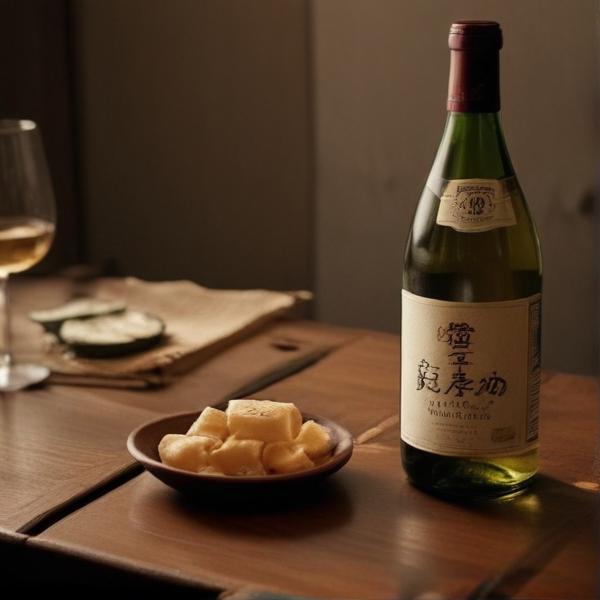基本信息 (Basic Information)
含义与用法 (Meanings & Usage)
中文核心释义 (Core Chinese Meaning): 酒精饮料,多指以谷物、水果等发酵酿造的饮品,如白酒、葡萄酒、啤酒等。
英文核心释义 (Core English Meaning): alcoholic drink; beverages made by fermenting grains or fruits, such as wine, liquor, or beer.
象形意义 / 为何这么写 (Pictographic Meaning / Writing Rationale)
文言文释义 (Classical Chinese Meaning)
与现代意义相近,主要指酿造的含酒精饮料,亦泛指饮料。Similar to modern meaning; primarily refers to fermented alcoholic drinks, and sometimes to beverages in general.
深入学习 (In-depth Study)
字源故事 (Origin Story)
字形演变 (Character Evolution)
常用词语和例句 (Common Words & Examples)
白酒 (Chinese distilled liquor (often clear and strong))
中国的白酒度数很高,但味道独特。
Eng: Chinese baijiu is very strong, but has a unique taste.
啤酒 (beer)
夏天喝一杯冰啤酒非常解渴。
Eng: Drinking a cold beer in the summer is very refreshing.
红酒 (red wine)
晚餐时,他们一起喝了红酒。
Eng: They drank red wine together at dinner.
酒吧 (bar; pub)
周末我们常常去酒吧放松。
Eng: We often go to the bar to relax on weekends.
相关成语 (Related Idioms)
借酒消愁
Meaning: drown one's sorrows in drink
多语言翻译 (核心释义) (Translations (Core Meaning))
- French: alcool, boisson alcoolisée
- German: Alkohol, alkoholisches Getränk
- Spanish: alcohol, bebida alcohólica
- Italian: alcol, bevanda alcolica
- Portuguese: álcool, bebida alcoólica
- Russian: алкоголь, алкогольный напиток
- Arabic: كحول، مشروب كحولي
- Persian: الکل، نوشیدنی الکلی
- Dutch: alcohol, alcoholische drank
- Polish: alkohol, napój alkoholowy
- Vietnamese: rượu, thức uống có cồn
- Ukrainian: алкоголь, алкогольний напій
视频学习资源 (Video Learning Resources)
通过以下链接在热门视频网站搜索 "酒" 的更多讲解:
Search for more explanations of "酒" on popular video sites:
- 在 Bilibili.com 搜索 "酒 字源 说文解字" (Search on Bilibili)
- 在 YouTube.com 搜索 "jiu character origin etymology" (Search on YouTube)
网络参考 (Web References for "酒") ()
网络内容摘要 (Web Content Summary):
核心含义与字源:“酒”字本义为盛装于酒尊中的酒,是指发酵后的含酒精饮料。它由“水”与“酉”两部分组成,“水”表示液体,酉为酒器,兼表读音。在六书中属于形声兼会意字。 Core meaning & origin: The character “酒” originally refers to alcoholic beverages stored in wine vessels. It is pictographically and phonetically composed of "水" (water, indicating liquid) and "酉" (wine vessel and sound). It is a phono-semantic compound character.
文化背景:中国古代酿酒历史悠久,酒在诗歌、人生礼仪中常见。例如,曹操《短歌行》中有“何以解忧?唯有杜康。”表达了酒可以解忧的文化意象。 Cultural background: Alcohol production has a long history in China. Wine (酒) often appears in poetry and rituals, such as the famous line by Cao Cao: “何以解忧?唯有杜康。” (“What can dispel one’s sorrows? Only Du Kang’s wine.”) symbolizing wine as a source of comfort.
常用词与成语:汉语中“酒”常见于词语如“葡萄酒”(wine),“啤酒”(beer),或成语如“借酒消愁”(drown one’s sorrows in drink)。需注意,“酒”本身表示各类含酒精饮品,不专指一种。 Related words & phrases: “酒” appears in common words like “葡萄酒” (wine), “啤酒” (beer), and idioms like “借酒消愁” (to drown one’s sorrows in drink). Note: "酒" refers to all kinds of alcoholic beverages, not just one type.
- 易混淆点/注意事项
- “酉”为部首,在酒类相关字中常见(如“醉”、“酿”)。“酉” radical often appears in characters related to alcohol (“醉”:drunk, “酿”:brew).
- “酒”并不限于中国白酒,也包括各种酒类。"酒" covers all kinds of alcohol, not just Chinese spirits.
"酒"字的由来 - 知乎 - 知乎专栏
上图:"酒"字 三国时期,曹操写有著名的《短歌行》,其中有句是:"慨当以慷,忧思难忘。何以解忧?唯有杜康。"高度赞扬了杜康酒的美妙功效。中国古代酿酒的历史源远流长,为酿酒业作出杰出的贡献,非一…
酒字形演变字源_汉字「酒」_酒的甲骨文_酒的金文_金文编_甲骨文编
所以就人性之善惡。从水、从酉,酉亦聲。一曰,造也。吉凶所造也。」從「水」,表示酒漿一類之飲料;從「酉」,表示盛裝旨酒之酒尊,兼表音讀。本義為盛裝於酒尊中的酒漿。在六書中屬於形聲兼會意。 汉字:「酒」 字形演变 字源演变 甲2121(甲) 京都1932(甲)
更多图片 (酒 More Images) ()
